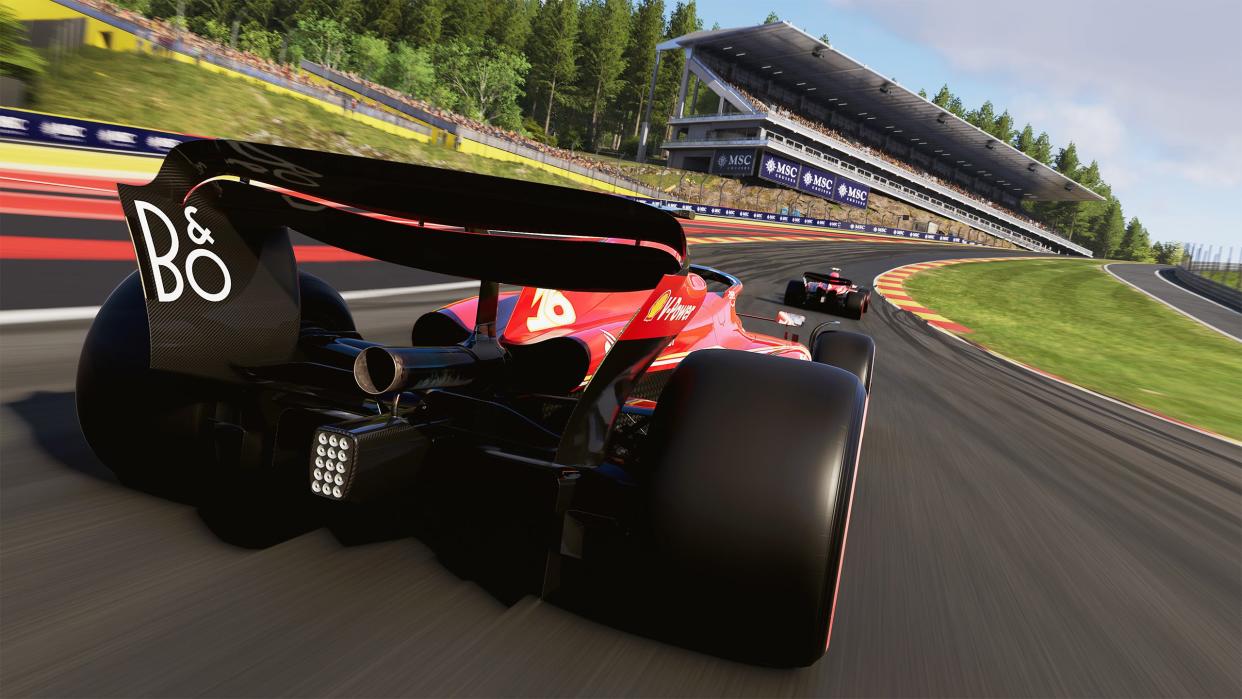Inside EA Sports F1 24's Massive Physics Overhaul

EA Sports' next Formula 1 game, F1 24, is set to drop on May 31. Aside from enhancements to the Career Mode and a few overhauled circuits (including Spa-Francorchamps), one of the big focuses for this year's installment is handling. Upgrades to the series' Dynamic Handling system go beyond the tire model, also impacting suspension kinematics, aero, and power unit behavior.
It starts with the chassis, as physics in F1 24 will now more accurately represent dynamic changes in camber and toe angle, roll centers, as well as anti-dive and anti-squat effects. Steering geometry as it relates to wheel loading has been paid attention to as well, and Senior Game Designer and Vehicle Handling Lead Casey Ringley says the sum of these adjustments makes the cars more predictable and intuitive to drive, "providing useful feedback loops" that exist in their real-life counterparts.
Tires receive more realistic slip curves and contact patch loading, which not only impact feel but also tire wear over the course of a session. Better thermal representation and more detailed interaction with the environment should translate to rubber that degrades more authentically than in previous games, while tweaked wet-weather physics increase the grip floor with the objective of making the cars less snappy on slippery surfaces.

"One of the big changes we've made this year, particularly in the wet, is that wet tracks affect the tire slip curves," Ringley said in a media briefing attended by The Drive. "Last year, we would just kind of scale them up and down, so you had the same kind of performance drop-off post peak slip in the wet as in the dry. It made them very difficult to catch in the wet.
"Now, you're still losing grip, but it sort of rounds out the top of the slip curves so you just have more control," Ringley added. The improved thermal simulation will also have a knock-on effect on wet-weather racing, in the way cool, damp patches of the circuit off the racing line can extend the life of disintegrating intermediates, for example.
On the aero side, Codemasters has used computational fluid dynamics data to better replicate the effect of slipstream and DRS usage, with the latter now "more closely linked to" rear-wing drag level—as it should've always been, since DRS is literally a mechanism of sacrificing rear downforce for top-end speed.
The new DRS behavior is also said to vary depending on the aero profile of each team's car, meaning players shouldn't expect to see a blanket percentage speed boost or grip loss when DRS is active across all constructors. Ringley says that the strengths and weaknesses of each team's aero package—for example, Williams' predilection for low-downforce circuits in 2023, and Red Bull and McLaren's relative prowess in mid-speed corners—will be palpable in gameplay.



Engine braking is now something you can adjust like other parameters in the car setup menu, impacting both energy harvesting and lift-and-coast characteristics. What's more, all Energy Recovery System mappings are available in all sessions—whether practicing, qualifying, or racing—eliminating an odd quirk of previous releases. A new differential toggle in the in-race multi-function display gives players further on-the-fly freedom to enhance or diminish how aggressively ERS is deployed, depending on what a particular track or race strategy calls for.
Taken together, these changes paint a picture of a comprehensive boon to physics. When asked how the dynamics of F1 24's cars compare to those of previous entries, Ringley highlighted F1 2020 as a "great balance and good reference point for how the cars behave and respond to inputs." That should be music to fans' ears, as 2020 still tops many players' lists as the finest F1 release of the modern era, particularly for its satisfying handling model. We'll have more to say on F1 24 as we near the game's release in little more than a month's time.
Got tips? Send 'em to tips@thedrive.com

